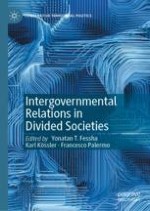2022 | OriginalPaper | Buchkapitel
5. Intergovernmental Relations and Ethnic Federalism in Ethiopia
verfasst von : Zemelak A. Ayele, Yonatan T. Fessha
Erschienen in: Intergovernmental Relations in Divided Societies
Aktivieren Sie unsere intelligente Suche, um passende Fachinhalte oder Patente zu finden.
Wählen Sie Textabschnitte aus um mit Künstlicher Intelligenz passenden Patente zu finden. powered by
Markieren Sie Textabschnitte, um KI-gestützt weitere passende Inhalte zu finden. powered by

